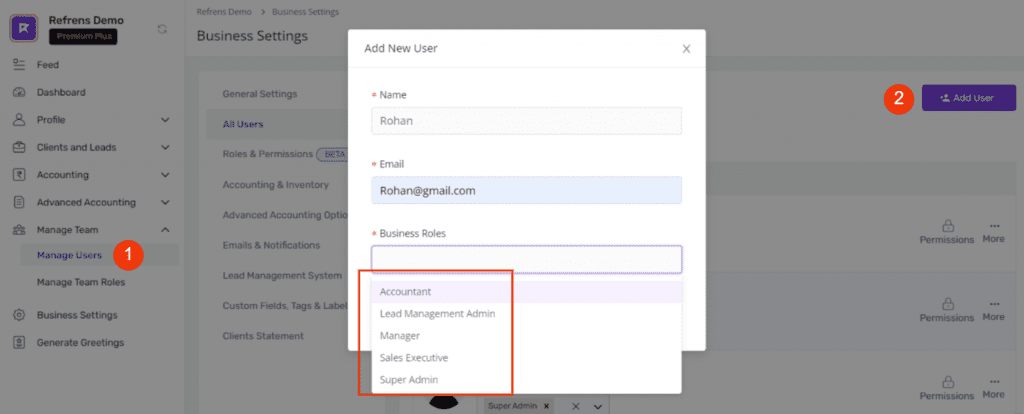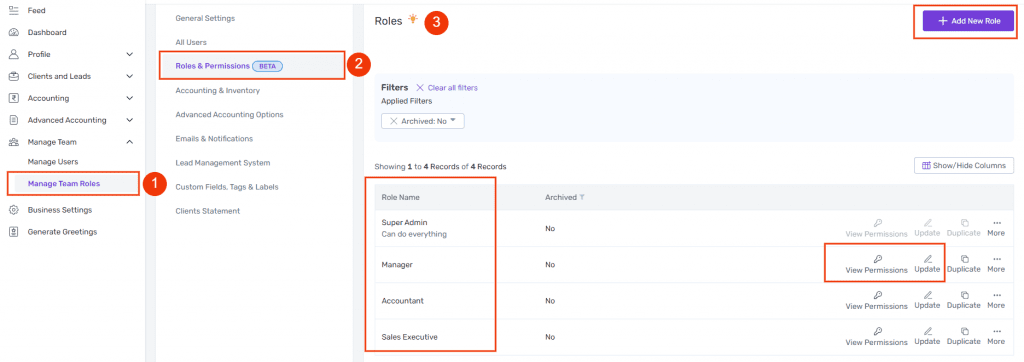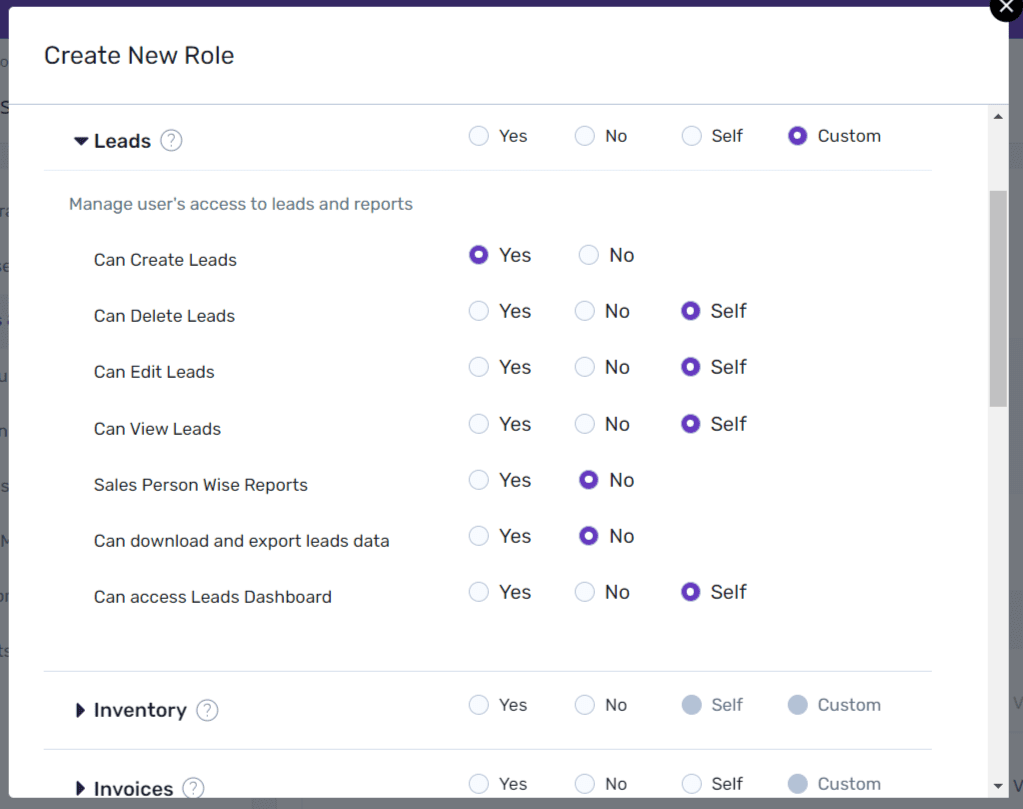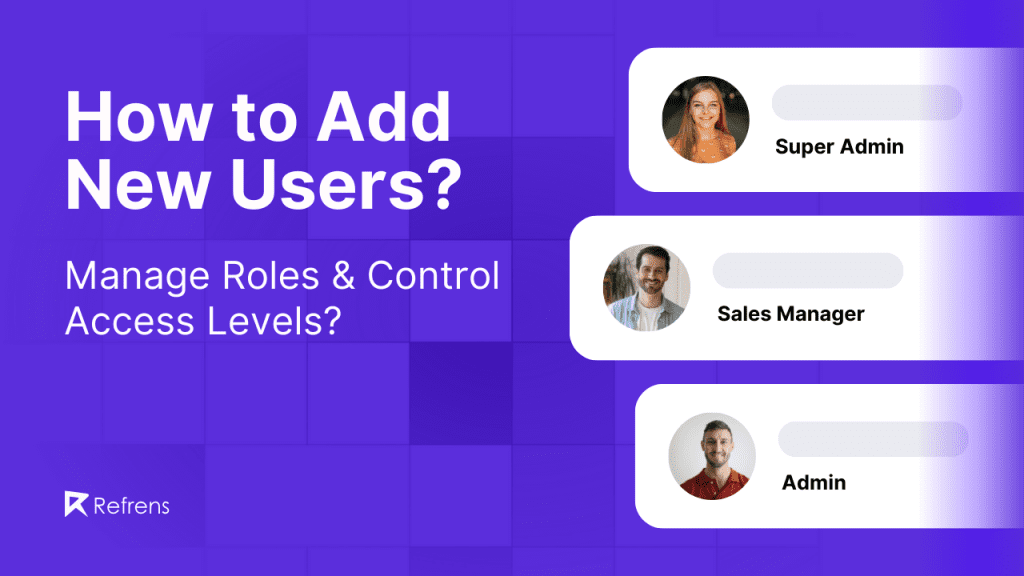Refrens become significantly more effective when your accountant, sales team, and all team members use the same account. This unified approach streamlines collaboration, allowing for efficient tracking of team activities. It also greatly reduces the time spent manually sharing documents and reports among the team members.
(Businesses incorporating their accountants into their Refrens usage have reported a remarkable 73% reduction in the time spent interacting with their Chartered Accountants.)
Adding a new user
To add a new user, Go to the sidebar > Manage Team >Manage Users > click on “Add User”

Once you fill-up the details and click on “Send Invite”, a link will be sent to the invited user over email to join.
Roles & Permissions
Refrens offers the flexibility to assign different levels of access to various members of your business. For instance, you can set it so that sales team members only see their own leads, while your accountant has viewing rights for accounting documents and reports without the ability to edit them. This is made possible through the use of Roles.
By default, we provide some pre-defined roles to help you get up and running quickly. These roles come with preset permissions, which you can view and modify according to your business needs. This customizable approach ensures that each team member has access to just the right amount of information necessary for their role.
Go to Manage Users > All Users > Permissions, to edit the permissions of the respective user.

Adding New Role
In case the default roles & permissions are not suited to your needs, you can also create new roles with customized permissions.
Just click on Business Settings > Roles & Permissions > Add New Role
This will open up a new form where you can define the role and control what level of access a user can get with this role.
For example, if you are creating a role for your sales team, you can control the access levels like this:
A sales team member should be able to create, delete, edit, or view leads. But to limit a sales rep’s activities on other sales rep’s leads, you can mark “Self”.
“Self” means that a user will only be able to do a particular action, only if they are the one who had created that specific lead or accounting document. For example, in the above-given case, we have marked “Can Edit Leads” as “Self”. This means a sales rep can edit a lead only if it was created by him/her/them.



















